ASUS Vivobook laptops are popular due to their portability and performance. However, there are times when these laptops may experience difficulty connecting to WiFi networks. Most users are facing issues with WiFi networks, not connecting issues. If you are having trouble getting your ASUS Vivobook to connect to a WiFi network, this article will provide some useful tips to help you fix the issue. We’ll cover troubleshooting steps to help you identify and resolve the underlying cause of the problem and provide some helpful tips to ensure that your device can always remain connected to the internet.
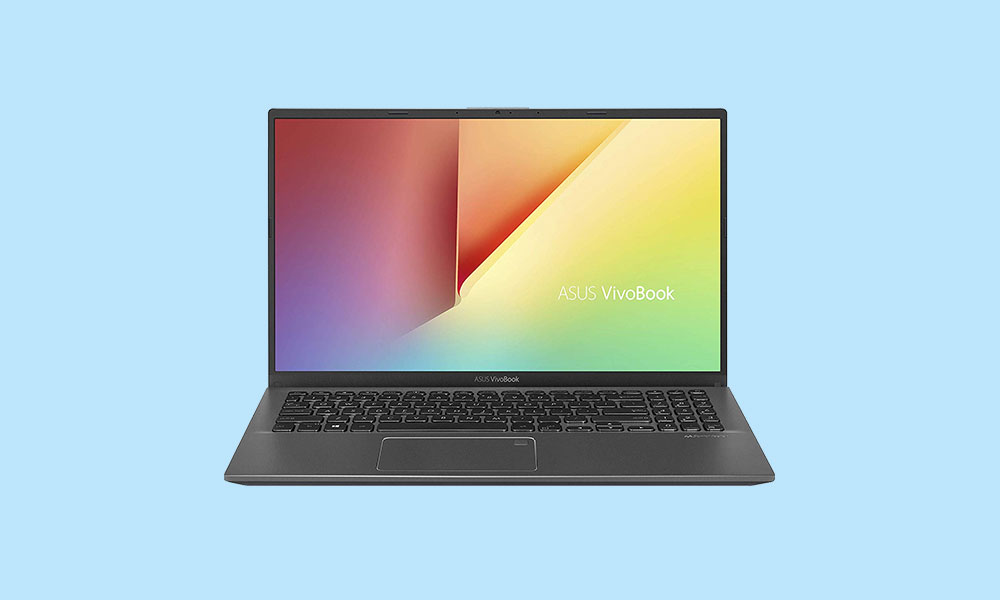
Page Contents
What Causes the ASUS Vivobook Not Connect to WiFi?
There are several possible causes for an ASUS Vivobook not connecting to a WiFi network, including:
- The wireless router is not properly configured.
- The wireless signal is too weak or blocked by walls, furniture, or other objects.
- ASUS Vivobook’s wireless adapter may not be properly installed or configured.
- The wireless drivers may be out of date.
- The router is overloaded or malfunctioning.
- The WiFi network name or password is incorrect.
- The Network is not broadcasting.
- The wireless Network is too far away.
Fix ASUS Vivobook Not Connecting to WiFi
As you know, ASUS Vivobook is a powerful laptop that is designed to make computing easier and more efficient. However, there are times when users may experience issues with their Vivobook not connecting to WiFi. This can be a frustrating issue, as it can prevent access to the internet and other online services. If you are not connecting to the WiFi network, you can fix this issue by following some solutions.
Fix 1: Make Sure the WiFi Adapter is ON
If you are having trouble connecting your ASUS Vivobook to a WiFi network, the first step is to ensure the WiFi adapter is turned on. This can be done by accessing the device’s settings and enabling the WiFi adapter. Sometimes, the setting is automatically disabled, which causes no connecting WiFi to the System. If the adapter is already enabled, the next step is to ensure that the correct WiFi network is selected and that the Network’s password is entered correctly.
Fix 2: Forget the WiFi Network
The next thing is to forget the WiFi network if the Network is still not connected to the System. However, you can forget the WiFi network on your laptop and then scan the available WiFi networks again for the connection. Firstly, choose “WiFi” from the taskbar at the bottom right side of the screen and select “Forget.”
After forgetting the password, the WiFi network will disappear from the list above. Now you can connect to the WiFi network again by entering the password and following the credentials.
Fix 3: Restart the System
Restarting it can often be the most effective way to fix the problem if you are having a technical issue with your laptop. Restarting your laptop will close all currently running programs, clear any temporary files stored in memory, and can often fix any minor technical issues. If you are facing a WiFi network not connecting to the laptop, try to restart the laptop. To restart the laptop, follow these steps:
- Go to the home screen and press the Windows Key on the keyboard.
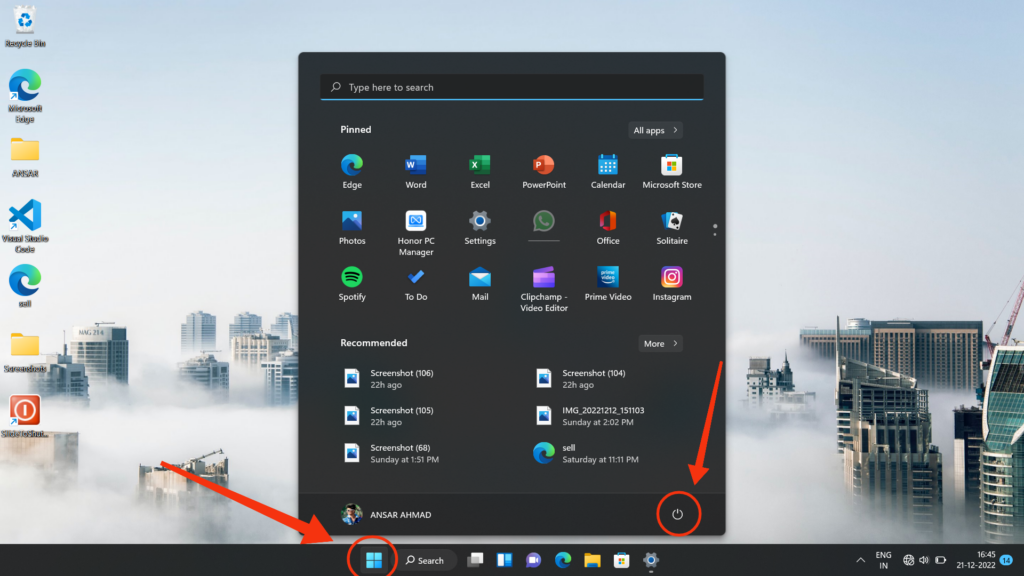
2. Press on the Power icon and select Restart from the above option.
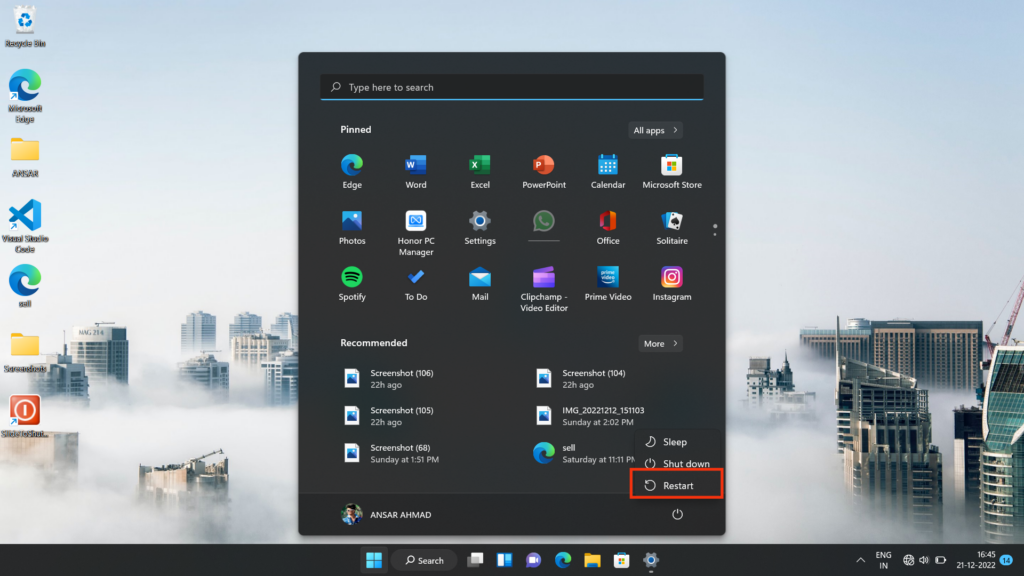
3. Once the laptop is powered off, press the power button to turn it back on.
If restarting your laptop does not fix the issue, you may need to take further steps, such as updating the operating system or running a virus scan.
Fix 4: Update the Wireless Drivers
The other easiest way to fix the issue is to update the driver to the latest version. Sometimes the wireless driver is outdated. Try to update the version to the latest one, which helps you to solve the WiFi network on your laptop. To update the driver to the up-to-date version on your laptop, follow these steps:
- Press Windows Key + X and choose Device Manager from the above list.
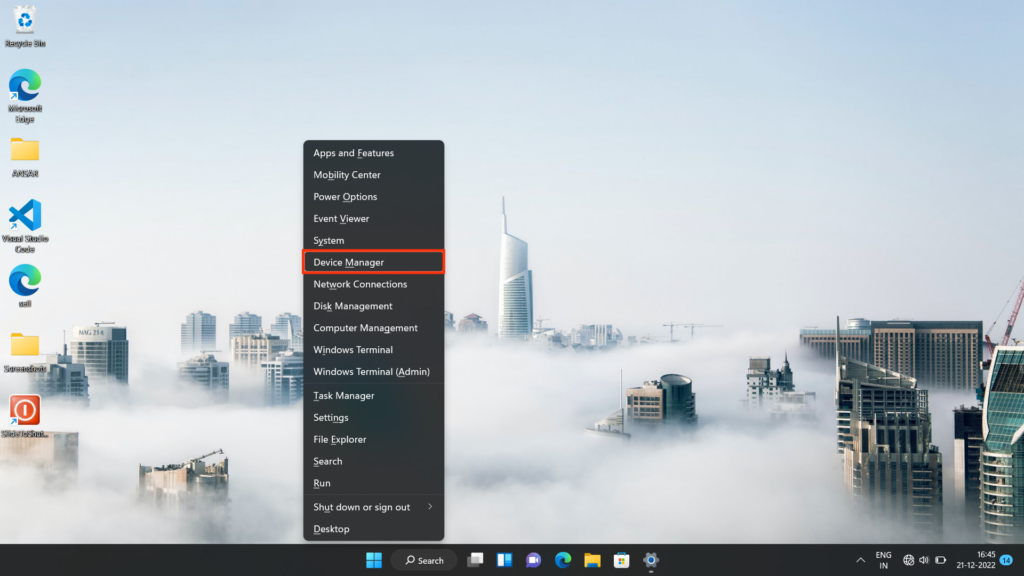
2. Tap on the left arrow next to Network adapters.

3. Right-click on Intel(R) Wireless -AC 9560 160MHz and select Update driver.

4. Now select Search automatically for drivers.
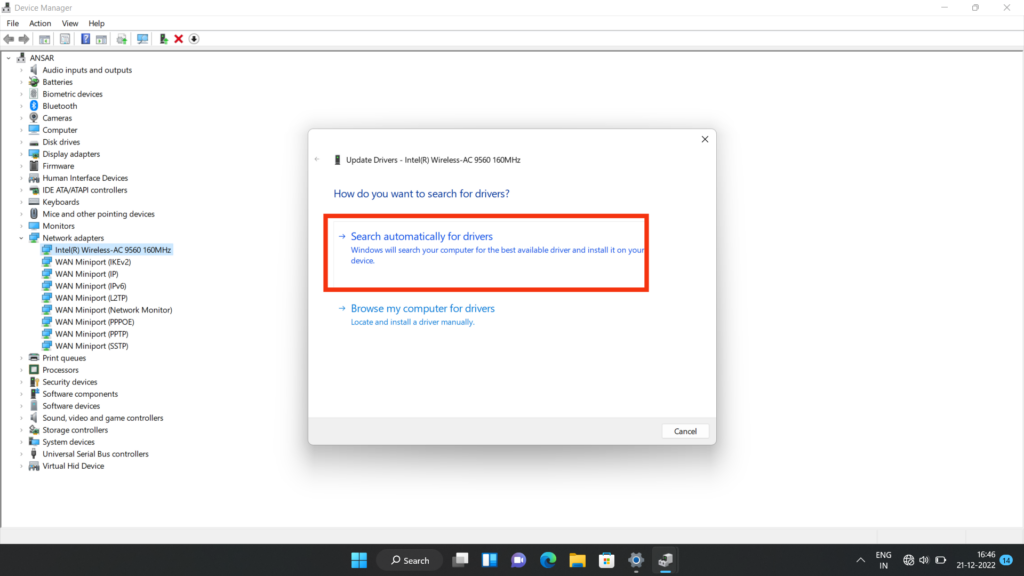
5. Follow the on-screen instructions to finish the update process.
Fix 5: Uninstall and Reinstall the Drivers
The drivers are essential components of your computer that allow you to use different hardware and software. Sometimes, the drivers can become corrupted or outdated, which can lead to various problems. In this case, it might be necessary to uninstall and reinstall the drivers in order to restore the System to its previous state. Uninstalling and reinstalling drivers can be difficult, but it is often necessary to keep your System running smoothly. If updating the driver does not fix the issue, then it is recommended to uninstall and reinstall the driver on your ASUS laptop. To uninstall and reinstall the drivers, follow these steps:
- Press Windows Key + X and choose Device Manager from the above list.

2. Tap on the left arrow next to Network adapters.

3. Right-click on Intel(R) Wireless -AC 9560 160MHz and select Uninstall device.

4. Now tap on Uninstall to confirm it.
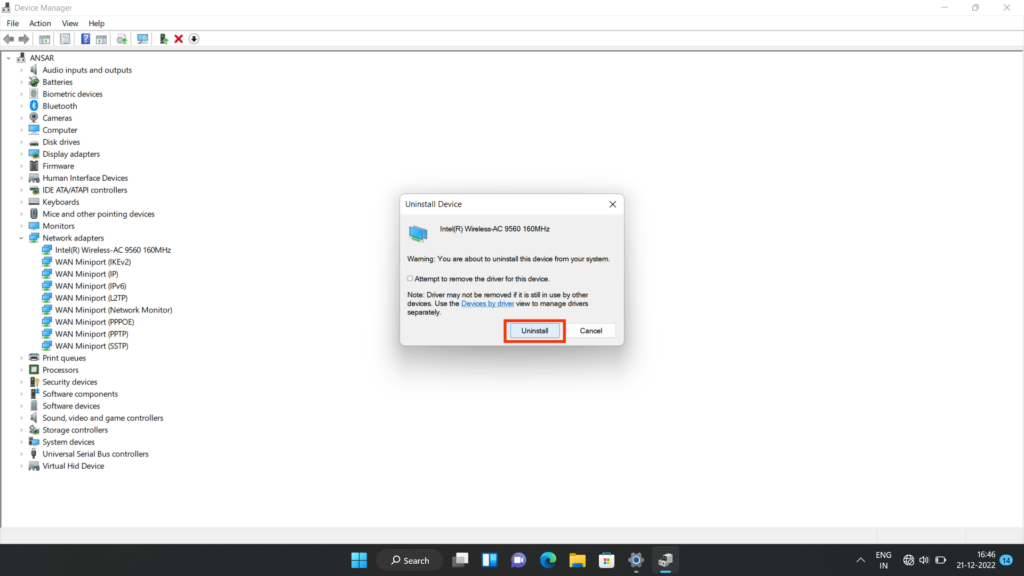
5. After uninstalling the network adapter, click on Action and select Scan for hardware changes. The laptop will reinstall the wireless, and the System will display the Network adapters option again.
6. Try to reinstall the drivers. However, you can also download the drivers from the ASUS Support site. If you have tried uninstalling and reinstalling drivers and still you are facing the issue, try another solution to fix the problem.
Fix 6: Reset Network Settings
This will remove all recent network adapters and set the network components to their original default settings. If the WiFi network is not connecting on your laptop, try to reset the network settings to their default and original settings. It helps you to resolve the issue without any other steps. To reset network settings on your ASUS VivoBook, follow these steps:
- Press Windows Keys on the keyboard and select Settings.
- Here select Network & Internet from the option.
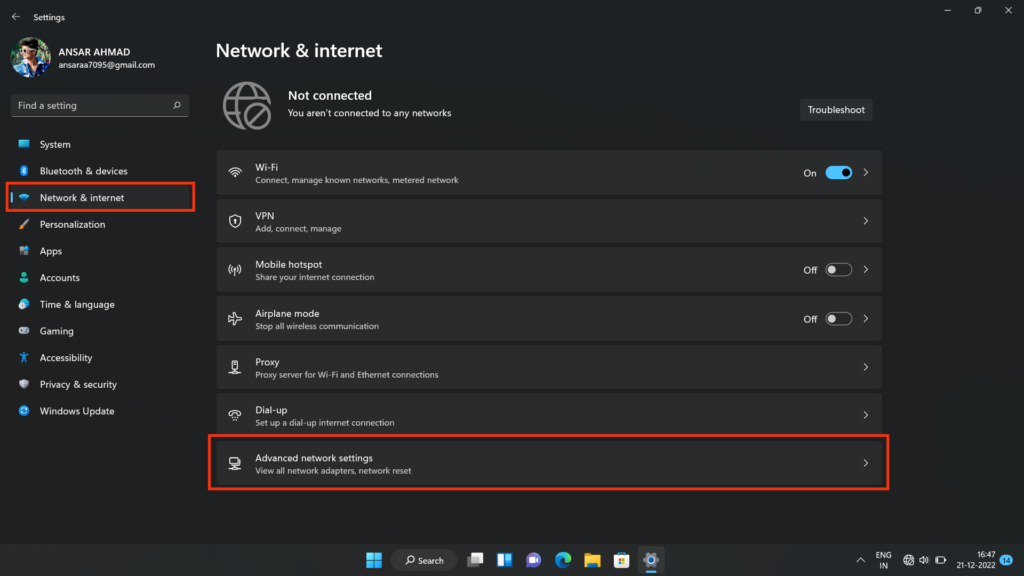
3. Now select Advanced network settings and tap on Network reset.
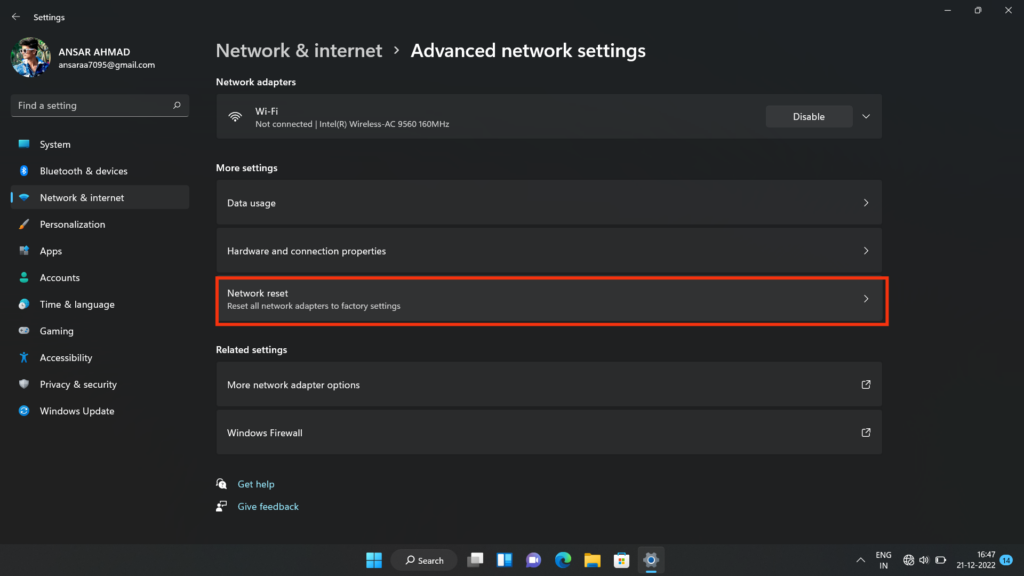
4. Tap on Reset now and confirm it by clicking on Yes.
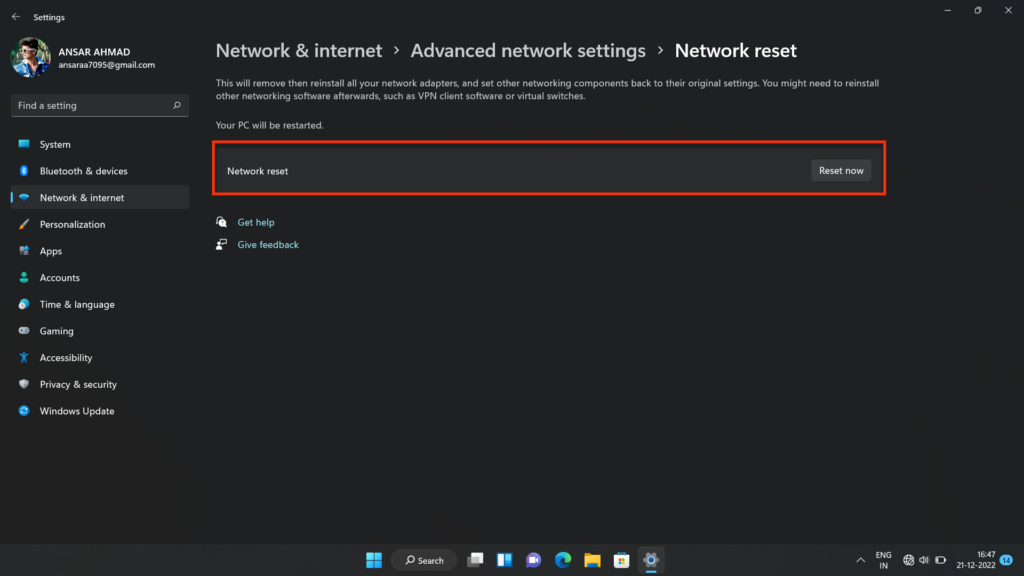
Fix 7: Perform a Reset Factory on Your System
A factory reset is a process of restoring your System to its original, out-of-the-box state. This involves erasing all of the data and settings and reinstalling the System’s original software. Factory resets are often used as a last resort to fix a system that is not functioning correctly or has been infected with malware. If you have tried all the above solutions and still the WiFi network does not connect, try to do a factory reset on your laptop by following the steps.
- Press Windows Keys on the keyboard and select Settings.
- Here tap on System.
- Scroll down and select Recovery from the above option.
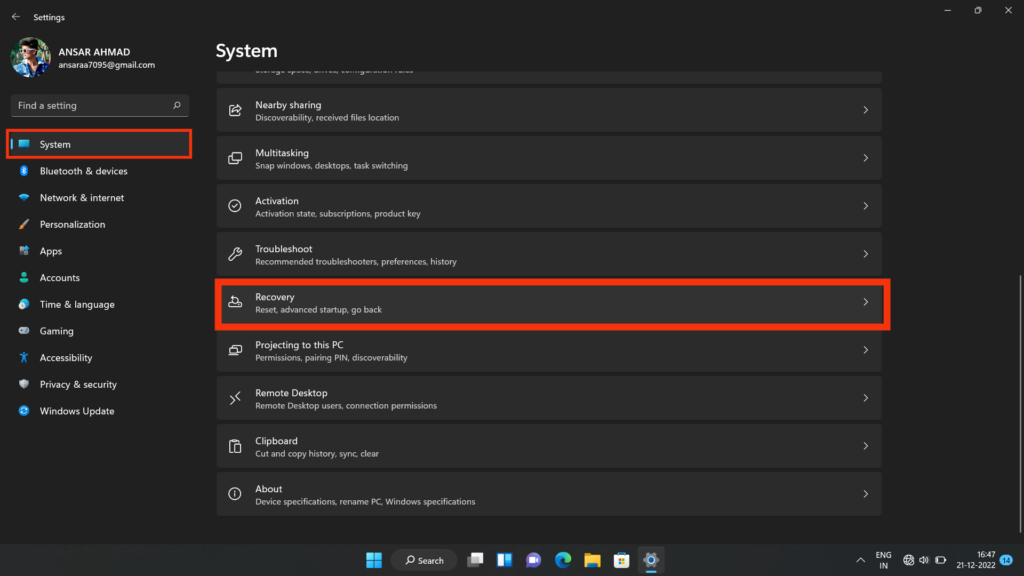
4. Tap on Reset PC and choose to Keep my files from the above two options.
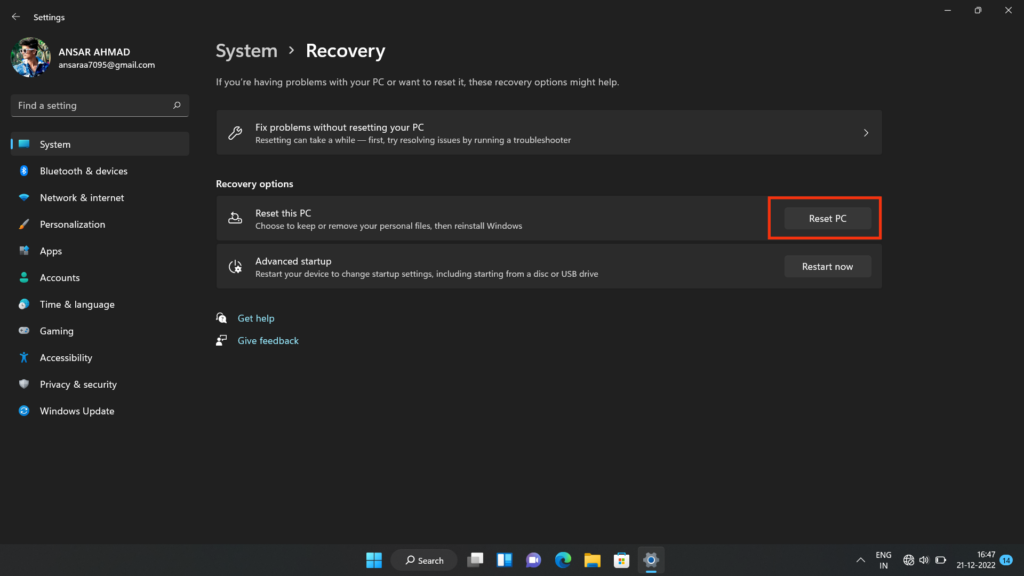
5. The laptop will automatically restart and wait for a few minutes to power on.
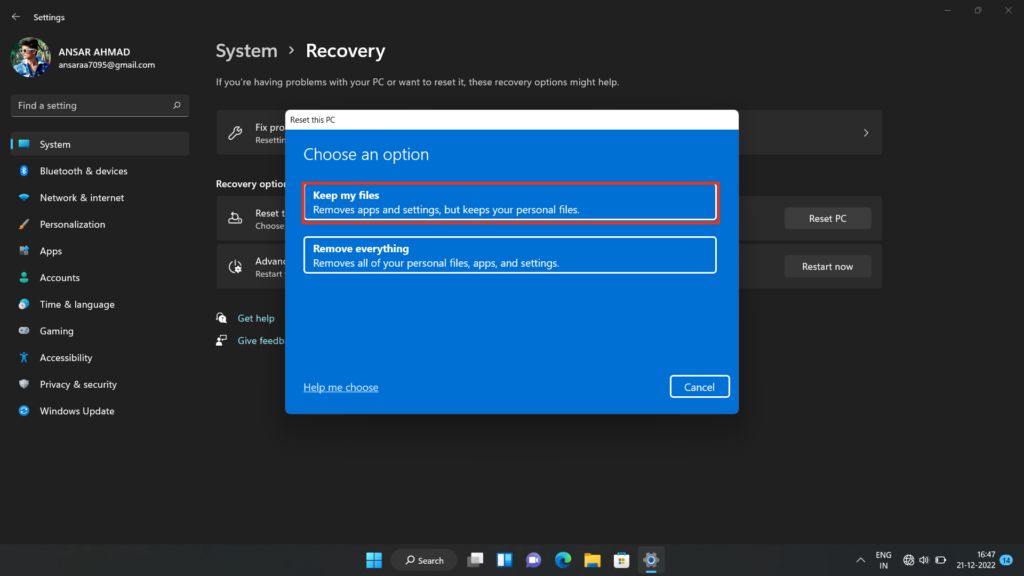
6. Try to connect to the WiFi network by entering the password.
Note: Performing a factory reset on your laptop will erase all the data, so be sure to back up any important files and documents before proceeding.
Frequently Asked Questions
How do I connect my ASUS Vivobook to WiFi?
To connect your ASUS Vivobook to WiFi, you will need to open the windows Settings app, select Network & Internet, select WiFi, and then select the Network you wish to connect to. Enter the password for the Network if prompted, and then click Connect.
Why is my ASUS Vivobook not connecting to WiFi?
There could be a few reasons why your ASUS Vivobook is not connected to WiFi. Check that the Network you are attempting to connect to is within range, that your Network is working properly, and that the settings on your ASUS Vivobook are correct. If none of these solutions work, try resetting your network adapter.
How do I reset my network adapter on my ASUS Vivobook?
To reset your network adapter on your ASUS Vivobook, open the windows Settings app, select Network & Internet, select Status, and then select Network Reset. Follow the prompts to reset your network adapter.
How do I connect my ASUS Vivobook to WiFi?
To connect your ASUS Vivobook to WiFi, press the Windows key + X to open the Power User menu, then select Network Connections. Next, right-click on your WiFi network and select Connect. Enter the network password and click Connect.
What are other troubleshooting steps to get my ASUS Vivobook to connect to WiFi?
Other troubleshooting steps include restarting your ASUS Vivobook, restarting your router or modem, checking for loose cables, and ensuring you’re entering the correct network password. If all else fails, try resetting your router or modem.
Supported Models:
Asus Vivobook 14
Asus Vivobook 14 OLED
Asus Vivobook 14 Pro
Asus Vivobook 14X
Asus Vivobook 15
Asus Vivobook 13 Slate OLED
Asus Vivobook 16X
Asus Vivobook Pro 15 OLED
Asus Vivobook Pro 15
Conclusion
This article has provided several methods for solving the issue of an ASUS Vivobook not connecting to WiFi. Through several troubleshooting methods, users can resolve the issue of their ASUS Vivobook not connecting to WiFi and enable them to be connected to the internet. It is suggested users start with the most basic troubleshooting techniques and work from there. If none of these methods are successful, the user should contact their internet service provider or ASUS technical support for further assistance.
